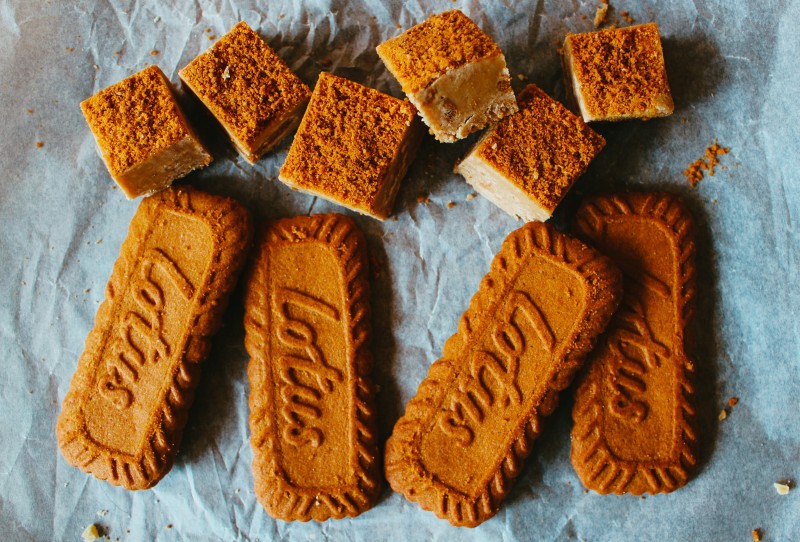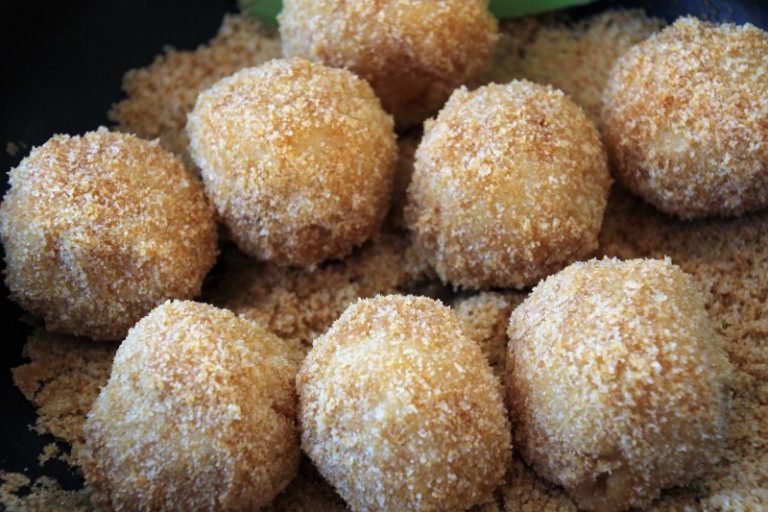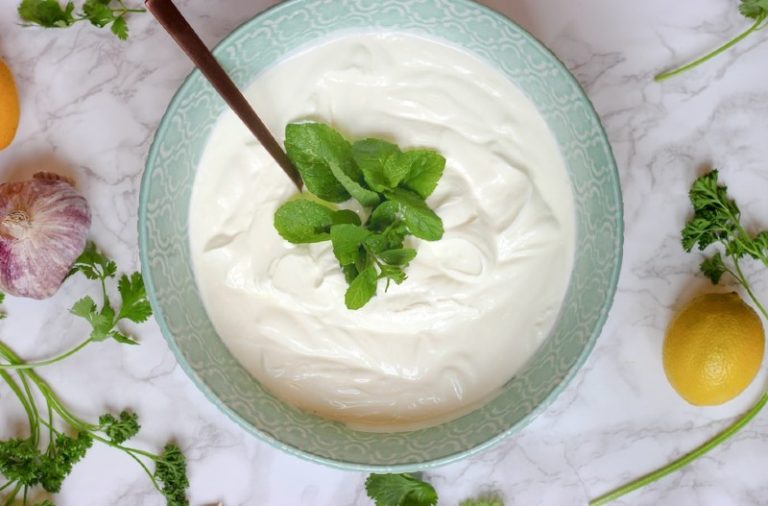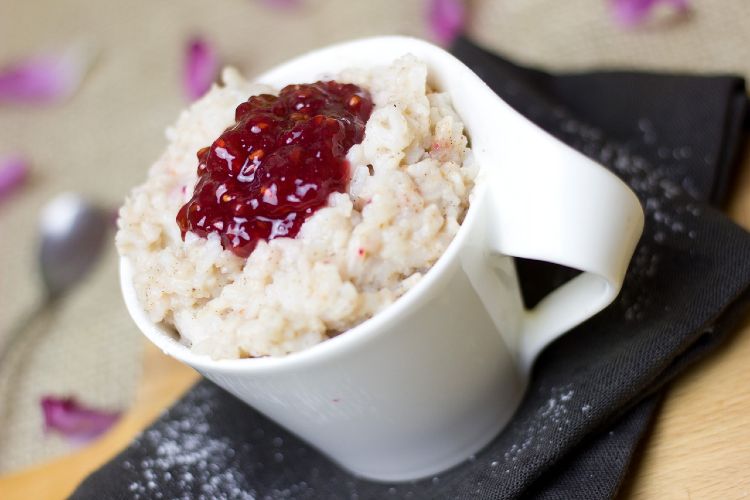What Does Biscoff Taste Like?
Quick Answer
Biscoff cookies, also known as speculoos cookies, have a distinctive spiced, caramelized flavor. They are made from a blend of cinnamon and brown sugar, giving them a warm, aromatic taste. The texture of Biscoff cookies is typically crisp and slightly crumbly, and they have a buttery mouthfeel even though they are often made without any actual butter, making them suitable for those who avoid dairy products.
Biscoff spread, which is made from these cookies, has a similar flavor profile but is smoother and spreadable, akin to the consistency of peanut butter or Nutella. The spread can be used in a variety of ways, such as on toast, in desserts, or as a dip for fruits.
Both Biscoff cookies and spread have a unique and addictive quality that makes them quite different from other cookies and spreads. The combination of spice, sweetness, and a slightly caramel-like flavor makes them stand out.
The Basics: What is Biscoff?
Biscoff has its roots in the picturesque country of Belgium, more specifically in its tradition of speculoos cookies. These spiced shortcrust biscuits are traditionally baked for consumption on St. Nicholas’ Day, but their popularity has led to them being enjoyed year-round. The name “Biscoff” itself is a portmanteau of ‘biscuit’ and ‘coffee,’ reflecting the cookie’s original purpose as a perfect companion to a cup of joe. Biscoff cookies were made famous internationally, in part, by being served as inflight snacks on airlines, elevating them from a regional delicacy to a global treat.
Typical Ingredients
The recipe for Biscoff cookies is simple but distinct. The key ingredients include:
- Wheat flour
- Sugar, often brown or beet sugar for a deeper flavor
- Vegetable oils, typically a blend that may include palm oil
- Soy flour
- Sodium bicarbonate (baking soda)
- Cinnamon
- Nutmeg
For Biscoff spread, additional elements like soy lecithin and citric acid are introduced to create a creamy texture and longer shelf-life.
What Does Biscoff Taste Like?
The Flavor Profile: Breaking it Down
Sweetness
When it comes to sweetness, Biscoff occupies a unique space in the world of cookies and sweets. It isn’t overpoweringly saccharine, nor is it bland. The sugar content is balanced perfectly with the other ingredients, offering just the right level of sweetness that lingers pleasantly on your palate without overwhelming it.
Level of Sweetness
Biscoff cookies strike a delicate balance in their sugar content. They are sweet enough to satisfy a sugar craving but not so much that they lose their nuanced flavor profile. If you’re looking for a frame of reference, they are decidedly less sweet than a typical chocolate chip cookie or a sugar-sprinkled doughnut, yet sweeter than something like a digestive biscuit or a breadstick.
Comparison to Other Sweets or Cookies
While most traditional cookies like chocolate chip or oatmeal raisin rely heavily on their sugar and add-in ingredients (like chocolate or nuts) for flavor, Biscoff derives its sweetness more subtly, integrating it into a complex flavor profile dominated by spices and a nutty richness. The level of sweetness is akin to that of a gingersnap, though without the bite of ginger. Compared to shortbread cookies, Biscoff presents a deeper, more multifaceted sweetness thanks to the spices and brown sugar, as opposed to the simple buttery sweetness of a shortbread cookie.
Spiciness and Warmth
One of the most distinctive aspects of Biscoff’s flavor profile is its spiciness, imbued with a comforting warmth that sets it apart from other cookies. This spiciness doesn’t refer to the kind of heat you would find in chili peppers but rather to a mix of spices that evoke feelings of coziness and nostalgia.
Presence of Spices like Cinnamon and Nutmeg
Biscoff cookies prominently feature spices like cinnamon and sometimes a hint of nutmeg. These spices are traditionally used in many baked goods to provide depth and complexity, but in Biscoff, they take center stage. Cinnamon lends a warm, aromatic character to the cookie, while nutmeg adds a layer of nuance and sophistication. These spices not only contribute to the cookie’s unique taste but also its aroma, which often serves as the first indicator of the comforting experience that awaits.
How These Spices Contribute to the Taste
The spices in Biscoff perform a delicate balancing act. The cinnamon’s warmth is immediately recognizable, offering a comforting embrace that awakens your senses. It pairs exceptionally well with the cookie’s inherent sweetness, turning what could have been a simple sugary treat into something much more special. Nutmeg, if used, adds a touch of complexity and earthiness, rounding off the flavor profile and complementing the sweetness and the texture of the cookie.
Together, these spices create a warming sensation that feels like a hug for your palate. They elevate Biscoff from being a simple cookie to something that triggers memories of home, holidays, and comfort. The spiciness adds another layer to the texture and sweetness, creating a complete and multi-faceted flavor experience.
Texture
When it comes to fully appreciating the unique flavor profile of Biscoff, texture plays an undeniable role. The interplay between the crunchiness of the cookie and the smoothness of the spread elevates the taste experience to new levels. Let’s dive into how these contrasting textures complement Biscoff’s flavors.
Crunchiness of the Cookie
Biscoff cookies are known for their crisp, crunchy texture. As you take a bite, there’s an audible snap, a tactile sensation that adds to the enjoyment. The crunchiness serves multiple purposes. First, it provides a satisfying contrast to the warmth and richness of the spices. Second, it allows for extended flavor release; as you chew, the spices, sugar, and other flavors evolve in your mouth, offering different dimensions of the Biscoff experience with each bite. The crunchy texture also makes the cookie an excellent candidate for dipping into coffee or milk, as it maintains its integrity without becoming too soggy too quickly.
Smoothness of the Spread
Switching gears, the Biscoff spread offers an entirely different tactile experience. Its smooth, creamy texture almost resembles that of peanut butter or Nutella but carries the unique flavor profile of the original Biscoff cookie. The spread’s smoothness makes it versatile for culinary uses, from serving as a filling between cake layers to acting as a dip for fruits or crackers. It also provides a different angle to appreciate the spices and flavors, as they are melded into a single, unified taste experience in this form, giving a lingering, velvety finish on the palate.
How Texture Affects the Overall Flavor Experience
Texture is more than just a tactile delight; it impacts how we perceive flavors. The crunchiness of the cookie and the smoothness of the spread offer two distinct ways to appreciate Biscoff’s intricate taste profile. The crunch of the cookie seems to amplify the spiciness and sweetness, making each bite a burst of flavor. On the other hand, the smoothness of the spread allows for a more prolonged and layered experience, where each flavor component can be appreciated in a continuous, flowing manner.
Nuttiness and Earthiness
One of the most intriguing aspects of Biscoff’s flavor profile is its nutty undertone, a characteristic that’s all the more fascinating considering that Biscoff contains no nuts. This section will delve into this elusive nutty flavor and its accompanying earthiness, exploring how it is achieved without the use of actual nuts.
Absence of Nuts but the Presence of a Nutty Flavor
Despite the absence of any nuts in its ingredient list, Biscoff delivers a distinctly nutty note that often confuses and delights those trying it for the first time. This nuttiness doesn’t emulate any specific type of nut but rather provides a generalized, earthy warmth that complements the sweetness and spiciness, rounding out the flavor profile.
How This is Achieved Through Ingredients and Baking Methods
The nutty flavor in Biscoff can be attributed to a combination of its ingredients and the baking process:
Ingredients
- Brown Sugar: The type of sugar used can lend a molasses-like depth that mimics the richness often associated with nuts.
- Soy Flour: Though not the main ingredient, soy flour subtly contributes to the nutty flavor.
- Spices: The cinnamon and nutmeg, in their role of balancing and complexifying the flavors, also help to elevate the nuttiness.
Caramel Undertones
Another captivating aspect of Biscoff’s flavor profile is its subtle hint of caramel. This isn’t the punchy, overtly sugary caramel you might find drizzled over a sundae or stuffed into a candy bar; it’s a more understated, complex note that enhances the cookie’s overall depth. Let’s explore how Biscoff achieves this nuance and how it compares to traditional caramel or toffee flavors.
The Role of Brown Sugar and Other Elements
The primary contributor to Biscoff’s caramel undertones is brown sugar. Brown sugar contains molasses, which imparts both color and a richer flavor compared to white sugar. When brown sugar is heated during the baking process, it undergoes caramelization-a chemical reaction that deepens both color and flavor, contributing to the cookie’s caramel-like quality.
Moreover, the vegetable oils used in the recipe play a role in developing this flavor. When combined with brown sugar and subjected to heat, these oils can also add to the caramelized taste. The spices-especially cinnamon-act as a perfect foil for these caramel undertones, enhancing the richness without letting it become overwhelmingly sweet.
Comparison to Caramel or Toffee Flavors
In traditional caramel or toffee, the flavors are intense, almost dominating any other taste components. With Biscoff, the caramel notes are more subdued, acting as a supporting character rather than the lead role. The result is not a caramel cookie, but rather a spiced cookie with hints of caramel complexity. Unlike traditional toffee that has a buttery undertone, Biscoff’s caramel nuances are more spice-inflected, tying back to its key ingredients like cinnamon and nutmeg.
Pairing Ideas
Once you’ve fallen in love with Biscoff’s multi-dimensional flavor profile, the next natural step is to explore what you can pair it with to elevate your culinary experience. Whether you’re dipping, spreading, or munching, there are endless possibilities for complementing Biscoff’s unique flavors.
Best Drinks to Accompany Biscoff
Coffee
The original intent of Biscoff as a biscuit to be paired with coffee is a match made in heaven. The robust, slightly bitter notes of coffee bring out Biscoff’s sweet, spicy elements, making each sip and each bite a delightful experience.
Tea
For tea drinkers, Biscoff pairs exceptionally well with spiced teas like chai or herbal teas like rooibos. The warm spices in the tea align perfectly with Biscoff’s own spice profile.
Hot Chocolate
For a truly indulgent treat, dip a Biscoff cookie into a cup of hot chocolate. The cocoa adds a new flavor dimension, while the warmth of the beverage accentuates the cookie’s spiciness.
Wine
If you’re looking to pair Biscoff with something a little more adult, consider a dessert wine like a Moscato or a Port. The sweetness of the wine harmonizes well with the cookie’s rich flavors.
Other Foods That Complement Its Flavor
Fruits
The spiciness of Biscoff works well with the natural sweetness of fruits. Try spreading Biscoff spread on apple slices for a snack that’s both healthy and indulgent.
Cheese
Believe it or not, the rich, creamy texture of cheeses like Brie or Camembert can be a delightful match for the crunchy, spiced character of a Biscoff cookie.
Ice Cream
Biscoff cookies can be crumbled as a topping over vanilla, cinnamon, or caramel ice creams. Alternatively, use Biscoff spread as a drizzle to add a flavorful twist.
Yogurt or Parfaits
Mix in some Biscoff spread into your morning yogurt or layer crushed Biscoff cookies in a fruit and yogurt parfait for an added depth of flavor.
Popular Recipes That Feature Biscoff
Biscoff Cheesecake
A modern twist on the classic cheesecake, where Biscoff cookies serve as the crust and Biscoff spread is mixed into the cheesecake batter for a harmonious blend of flavors.
Biscoff-Stuffed Pancakes
Imagine biting into a fluffy pancake and discovering a gooey center of melted Biscoff spread. This surprising and delightful twist makes breakfast an event to remember.
Biscoff Milkshake
Blend Biscoff cookies with ice cream and milk to create a creamy, spiced milkshake that’s both refreshing and decadent.
Biscoff Apple Crumble
Use crushed Biscoff cookies as the crumble topping for an apple crumble. The spices in the cookie complement the tartness of the apples beautifully.
Biscoff Ice Cream
Incorporate Biscoff spread and crushed cookies into homemade ice cream for a dessert that combines smooth, creamy textures with spicy, crunchy notes.
Savory Biscoff Glaze
Yes, you read that right. Mixing Biscoff spread with some soy sauce and spices can create an unusual but delicious glaze for meats like chicken or pork, adding a sweet and spicy dimension.





